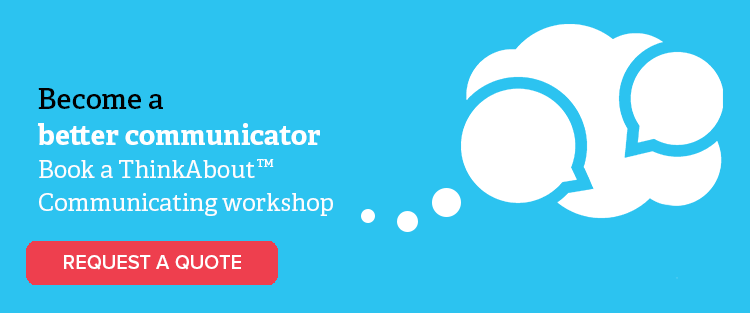It’s no secret that communication is the backbone of any successful organisation. Yet many companies struggle with perfecting their communication processes.
Take, for example, the 2013 Yahoo communication blunder turned PR disaster, in which Yahoo’s CEO announced (via email) that the company would be banning employees from working remotely. This top-down, autocratic style of communication failed to provide an avenue for two-way communication with the employees whose lives were affected by the drastic change.
Or the infamous Enron, whose downfall, in part, can be attributed to multiple failures in their internal communications processes. Studies into the scandal would later determine that Enron management failed to maintain adequate communications between senior staff and employees, preventing management from communicating appropriate values and being open to signs of problems.
Famous scandals and PR disasters aside, communication failure is one of the biggest problems facing businesses, regardless of the size of the company or the industry in which it operates. And the consequences of poor communication are many: inefficient and ineffective meetings, disengaged employees, lack of innovation, employee conflict, high staff turnover, decreased employee morale, low productivity…just to name a few.
It’s no surprise then, that poor communication can cost a business big. A survey of 400 US and UK businesses estimated that poor communication and employee misunderstandings cost organisations USD$37B in lost productivity (an average cost of $26,041 per worker and $62.4M per organisation per year). Closer to home, Australian hospitals have been accused of putting patients at risk due to poor communication processes. In some industries, poor communication doesn’t just cost money – it can cost lives.
Why is communication so hard to get right?
When it comes to improving communication in the workplace, there’s no shortage of information available: how to be a better listener, what to do if your team is malfunctioning, how to improve communication in virtual teams, how to deal with cultural barriers, how to incorporate feedback into your organisation. Communication processes, and problems, are multifaceted, and these articles provide valuable information and solutions to many of the problems facing organisations.
However, what these solutions often fail to take into account is how others prefer to receive information and how different communication styles work within teams. You could implement the most high-tech communication tools and project management software based on the best communication strategies – but if the message isn’t getting through, communication and employee engagement will suffer.
How can HBDI® help your team communicate better?
At the heart of Herrmann’s HBDI® assessment is the idea that each and every person has a unique way of thinking, preferencing different quadrants of the Whole Brain® Model. While someone may prefer one thinking style, it is more common to align with a combination of the four thinking styles, and even then, everyone is able to adapt their thinking style by leveraging Whole Brain® Thinking.

The four-colour, four-quadrant graphic and Whole Brain® are trademarks of Herrmann Global © 2019
Likewise, everyone has a unique communication style – this is because how we communicate is driven by how we think, and each thinking preference has distinct characteristics in how they process and communicate information.
What are the different communication styles?
Analytical thinkers and communicators are logical and fact-based. They prefer working with numbers, statistics and data and need to gather facts before making a decision.
Experimental thinkers and communicators, on the other hand, are more interested in exploring concepts and strategies and prefer to take a big-picture approach to problem-solving. Experimental communicators can tolerate ambiguity and are okay with challenging established policies.
Then there are practical thinkers and communicators, who are highly organised and value detailed plans and procedures.
Lastly, relational thinkers and communicators are more emotional and their decisions are driven by their feelings. They are better at picking up on non-verbal cues, recognising interpersonal difficulties and considering the values of everyone in a group.
How to communicate with different thinkers
Now imagine you’re trying to motivate thinkers from different quadrants – you might use a lofty big-picture approach to get an experimental thinker on board, while it’d be a smarter move to show analytical thinker the numbers and facts first.
The HBDI helps you to develop a greater understanding of how co-workers prefer to think and how they prefer to communicate. It teaches you to work within other’s thinking frameworks and tailor your communication accordingly – communicating in a way that you know your co-workers will be responsive to.
The HBDI can be used to drive more open communication, changing the way individuals approach team meetings and communication within your team (whether that be through email, project management tools, in person or over the phone).
What’s more, better communication and a deeper understanding of each other leads to stronger relationships in the workplace, growing trust between employee and employer and ensuring communication goes both ways (something that could have benefitted Enron).
Herrmann’s research shows that presenting information in a way that is compatible with different preferences is critical to effectively communicating with and meeting the needs and expectations of those you interact within the work environment.
Not everyone thinks, or communicates, in the same way. HBDI provides a greater awareness of how individuals in a team are thinking during any given situation. Leaders can learn to adapt their communication styles with certain team members rather than communicating with everyone in the same way. It can be used when planning team meetings, project teams and choosing the right people for a task.
How to improve communication in your business
Herrmann and the HBDI® assessment can help you bridge the communication gap between different thinkers in your team. The ThinkAbout™ Communicating workshop is designed to help businesses explore how different thinking preferences affect communication styles and how to adapt your communication style to the thinking preferences of others.


